Spanning over three million acres, Death Valley National Park is the largest national park in the lower 48 states, offering endless opportunities for desert exploration. While Death Valley is recognized as the hottest, driest place in North America, the weather is mild in the winter and spring, making it the perfect destination for hiking, camping and outdoor adventures. From sand dunes to hot springs, this five-day Death Valley road trip itinerary includes a mix of camping and hotels, plus suggestions on local restaurants and activities. This route runs clockwise from Ridgecrest to Tecopa on State Route 178, State Route 190 and State Route 127, and it can easily be done in reverse for visitors driving north from the Mojave National Preserve.
Please note: In 2023 Tropical Storm Hilary caused significant damage in and around the park, and a number of roads and attractions are still closed as of February 2024. SR 190, which runs through the park and offers access to Panamint Springs, Stovepipe Wells and Furnace Creek, is open, and visitors accessing the park’s west entrance via Ridgecrest on SR 178 will have no delay. However, visitors connecting to SR 190 from SR 136 in Lone Pine and those traveling on SR 127 from Baker may experience delays of up to 45 minutes due to road construction. For the latest info, please check the Death Valley National Park website’s closures page, or call the ranger station.
Day 1: Stovepipe Wells and Sand Dunes
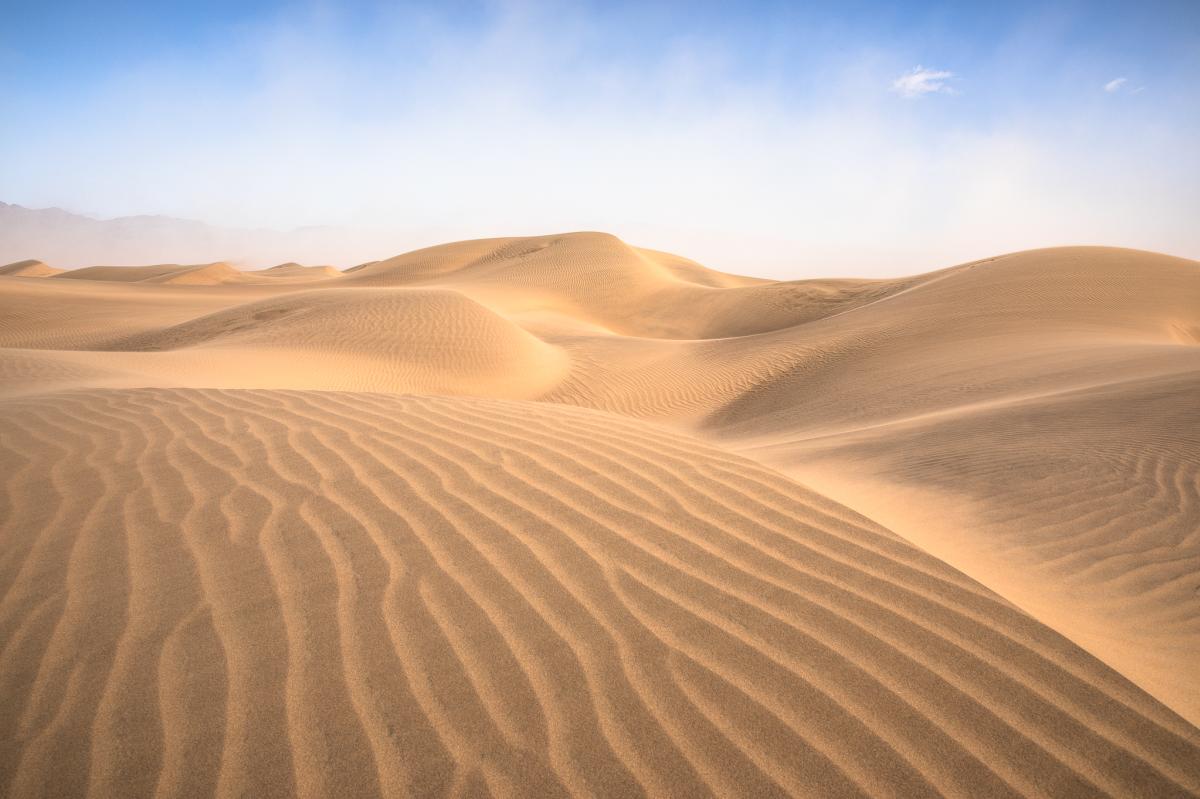
Beyond fuel, hotels and grocery stores, Ridgecrest has a handful of restaurants and two museums, so it's an ideal place to stop en route to Death Valley National Park. Classic Gyros offers a range of tasty Mediterranean-inspired dishes, while Pure Healing Foods has lighter options like smoothies and sandwiches. If you plan on spending the night in Ridgecrest, be sure to make a reservation at top-rated Mon Reve, serving delicious French fare Tuesday through Saturday. The Maturango Museum has several exhibits covering the natural and cultural history of the Northern Mojave Desert, and they also offer guided tours to the nearby Coso Rock Art District to view ancient petroglyphs. Another worthwhile stop is the China Lake Museum, which has an extensive collection of missiles and aircraft, highlighting the site's pivotal role in naval aviation research and development.
Stovepipe Wells Village is a two-hour drive from Ridgecrest, and with lodging (both a hotel and a large campground), fuel, food, a general store and a ranger station, it’s the perfect base camp in Death Valley National Park. The campground, which runs $14 per night, is located right across from the Toll Road Restaurant and the Badwater Saloon, both of which are open daily. The village is just two miles from the Mesquite Flat Sand Dunes, the most easily accessible of the park's five dune fields. Sandboarding is permitted on these dunes, and it’s approximately three miles round trip to reach the tallest dunes, which stand around 100 feet high.
Day 2: 4x4 Adventures and Furnace Creek
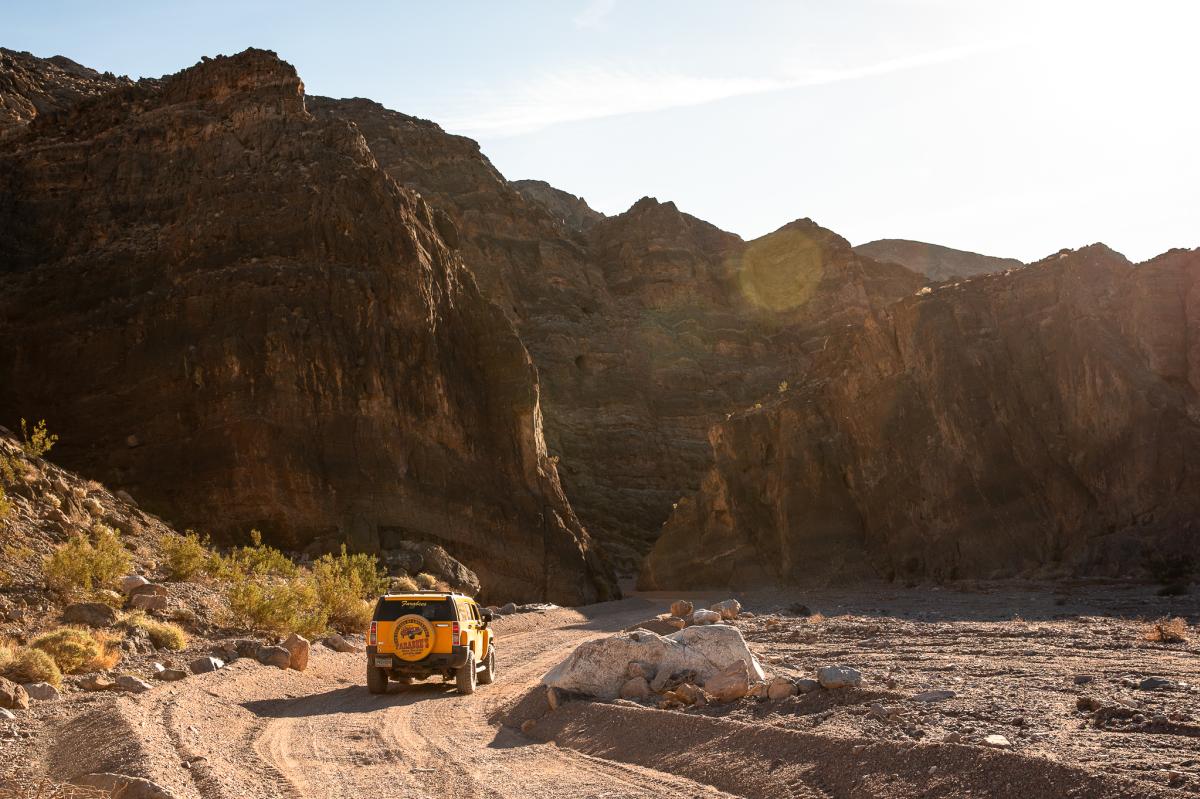
While Death Valley National Park has plenty of attractions accessible via paved roads, many more are located off of dirt roads in remote areas. Rather than getting stuck with a hefty towing bill, consider booking a 4x4 tour with Farabee’s Jeep Rentals & Tours. Beyond guided tours to stunning spots like the Racetrack, Emigrant Canyon, and Echo Canyon, Farabee’s also offers Jeep rentals for self-guided tours. Lunch is provided on full-day tours, and from geology to Star Wars filming locations, Farabee’s knowledgeable and friendly guides know this park inside out.
For visitors interested in learning about the rich history of the region, be sure to pay a visit to Harmony Borax Works. Built in the 1880s near Furnace Creek, the plant once produced three tons of borax each day, and the mineral was exported via mule teams and wagons. The interpretive exhibits at Harmony Borax Works are accessible via a short trail, and the National Park Service (NPS) also offers regularly scheduled ranger walks here. NPS also offers ranger walks at the Mesquite Flat Sand Dunes and Badwater Basin, along with guided paleontology hikes, the latter of which can be reserved online via recreation.gov.
If you’re looking to take a break from camping, the Inn at Death Valley is a luxurious retreat in the middle of the desert, with everything from fine dining to a spa. The AAA-rated four diamond resort has 66 hotel rooms and 22 casitas, plus a spring-fed pool heated to 87 degrees year-round. The Ranch at Death Valley, located a mile up the road in Furnace Creek, is the Inn’s more budget-friendly sister property, both of which are part of the Oasis at Death Valley. The village has a general store, restaurants and the Last Kind Words Saloon, which is a Wild West-themed bar with a drink menu to match.
Just five minutes south of Furnace Creek on SR 190 is Zabriskie Point (pictured below), which boasts sweeping views of the badlands and Manly Beacon. Zabriskie Point is amazing at sunrise and sunset, and the paved, accessible path to the overlook is just a quarter of a mile.
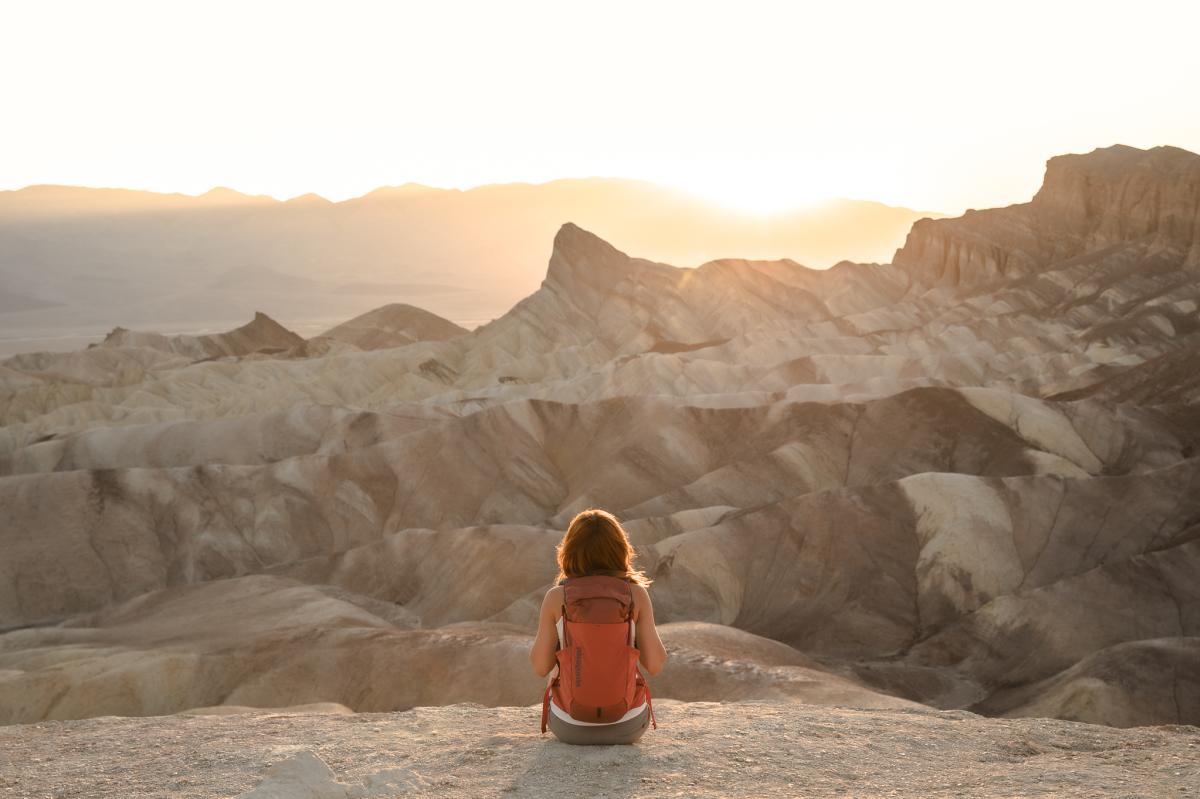
Day 3: Rainbow Rock Formations and Car Camping
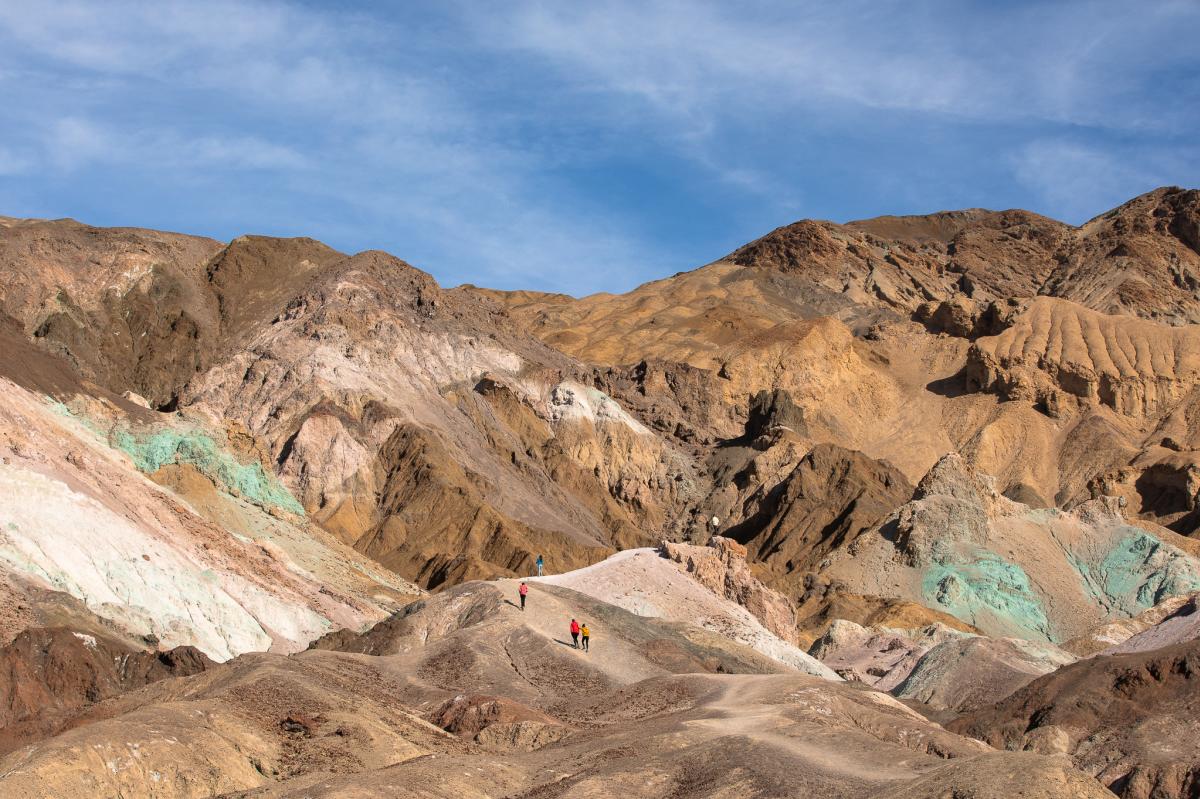
The Oasis at Death Valley has two breakfast options: a full buffet at the 1849 Restaurant, located at the Ranch, and the Inn Dining Room, which offers a simple yet sophisticated menu with scrambles, avocado toast, house-made date bread and more.
Golden Canyon is perhaps one of the most beautiful hikes in the park, wandering among otherworldly rock formations, some of which you may recognize from Star Wars: Episode IV — A New Hope. The parking lot fills up quickly, so it’s best to hit this trail first thing in the morning. The out-and-back hike is three miles with nearly 600 feet of elevation gain, but this route also connects with the Gower Gulch Loop and the Badlands Loop, which leads to Zabriskie Point for a seven-mile trek with 1,100 feet of gain.
For a scenic drive with roadside pullouts and shorter trails, Artists Palette (pictured above) is accessible via a nine-mile road weaving through colorful volcanic rock deposits. The paved, one-way route has a vehicle length restriction of 25 feet, and it is also a popular spot for cyclists, so remember to drive slow and share the road. The light is especially magical at sunset, so consider doing a scout run during the day and returning in the late afternoon to see these rainbow hills truly come alive.
In addition to a mix of large, developed campgrounds (Stovepipe Wells, Furnace Creek, Sunset) and smaller, first come, first served campgrounds (Texas Springs, Emigrant, Mesquite Spring), visitors can now obtain a free permit from NPS for dispersed camping in designated areas. Permits can be obtained at either of the park’s two ranger stations, either the day of arrival or the day before, and visitors are assigned to numbered campsites. These primitive camping areas do not have bathrooms, water or other amenities, and though they are on dirt roads, they are clearly marked with posts (photo below).

Day 4: Salt Flats and a Quiet Retreat

Notable for being the lowest point in North America at 282 feet below sea level, Badwater Basin is one of the major attractions in Death Valley. Thanks to the record amount of precipitation from the remnants of Hurricane Hilary in 2023, the salt basin has a temporary lake, creating once-in-a-lifetime photo ops. As of February 2024, there is still a significant amount of water on the salt flats, and with the aquifer at capacity, the water is expected to remain throughout the spring. Sunset at Badwater Basin is incredible, but visiting in the middle of the day is equally spectacular, as the lake glows a vibrant shade of aqua under the noon sun. (Please note: NPS rangers are asking visitors to avoid walking on wet, soggy areas, so as not to leave deep footprints on the landscape. These footprints will be revealed when the water eventually recedes, and they will remain for many years to come.)
Located half an hour south of Death Valley Junction, Tecopa is famous for its mineral hot springs and rustic accommodations, plus a few charming eateries. Tecopa Hot Springs Campground and Tecopa Hot Springs Resort both offer camping, cabins and soaking pools, while Death Valley Hot Springs has modern units, plus an Airstream with unobstructed views of the mountains (pictured below). Guests at Death Valley Hot Springs have access to the pools at the adjacent Delight’s Hot Springs Resort, which includes one large communal pool and four private pools with beautiful murals.
Steaks & Beer serves breakfast and dinner, but don't let the name fool you: this restaurant offers a five-course prix fixe menu, plus a small yet diverse selection of appetizers and entrees. For top-notch craft beer, look no further than Death Valley Brewing, known for their tasty peach habanero wheat beer, among other favorites. The neighboring Kit Fox Cafe, which is open for breakfast, lunch, and dinner, serves pizza, soups, vegan dishes and more, and patrons are welcome to bring their dinner next door to the brewery. Yet another option is Tecopa Brewing Company, offering a rotating selection of seasonal and limited-edition beers.

Day 5: Soak It In, Tecopa Style
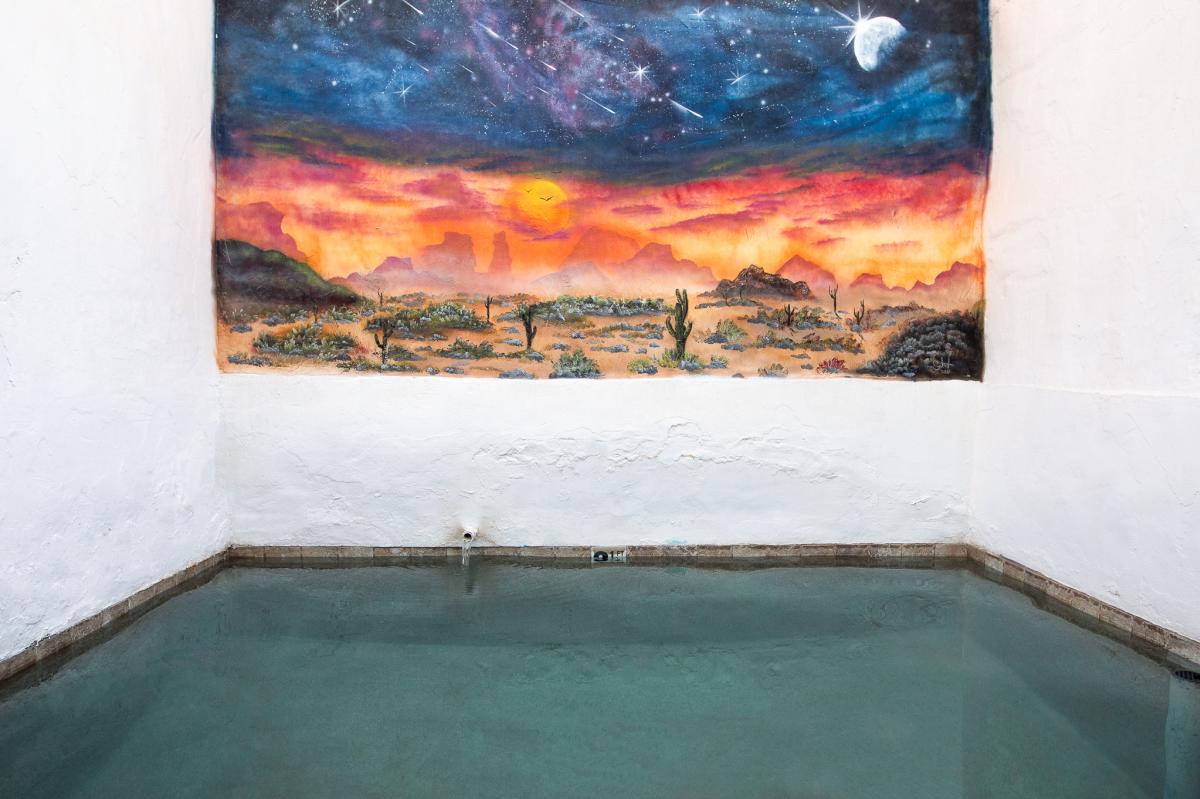
The mineral pools at Delight’s Hot Springs are open 24 hours a day and closed for one hour each night for cleaning. However, there is often a waitlist for the property's four private pools in the afternoon and early evening, especially on weekends. While guests are generally respectful of the 30-minute limit, visiting in the early morning is the best way to avoid crowds — and enjoy a sparkling clean pool. After a post-sunrise soak, be sure to stop by the Kit Fox Cafe, which opens for breakfast at 7 a.m. Their lattes and fresh-baked pastries are phenomenal, as is their breakfast sandwich, which is served on a delicious homemade biscuit.
If you have time, stop by the China Ranch Date Farm, which sits in a verdant oasis several miles south of Tecopa. The family-owned farm specializes in growing a variety of dates, and the property has an intriguing history, having changed hands numerous times since the late 1800s. Visitors can explore the farm via a small network of short, scenic trails, and the gift shop sells dates, baked goods and more.



















